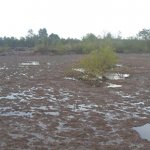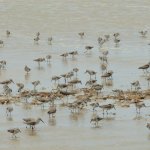With five WHSRN sites, the coast of Texas is well recognized as providing important habitat for hundreds of thousands of shorebirds. One of the most ecologically rich of these sites is Laguna Madre, on the Texas – Mexico border, stretching nearly 400 miles from Ports Mansfield, Texas to San Fernando, Mexico. It is one of only six hypersaline lagoons in the world – a vast expanse of shallow, wind-swept wetlands separated from the Gulf of Mexico by a strand of barrier beaches. This unique habitat includes mangroves, upper tidal flats, grasslands, beaches, and algal flats – all supporting shorebirds throughout the entire year.
Portions of Laguna Madre are not part of the WHSRN site. These include popular tourist destinations with high-rise hotels crowded on the tiny barrier beaches, no longer providing habitat for shorebirds. There are also other areas like the remote and pristine Boca Chica in the Lower Rio Grande Valley National Wildlife Refuge, the perfect place for a flock of Piping Plovers (Charadrius melodus) to spend their winter months. Flocks as large as 100 of this endangered species have been seen in this area. In addition, several species of beach-nesting birds breed in the overwash areas here. Red Knots (Calidris canutus), listed as threatened under the Endangered Species Act, are joined by other Arctic-nesting migratory shorebirds using the area as both as a stopover site during migration and as wintering habitat.
It is in Boca Chica that SpaceX have built their South Texas launch site to support their exploration of space. As SpaceX’s technology has rapidly advanced, there has been quite a few changes to their operations and site design. These changes are not included in the original Environmental Impact Statement (EIS) conducted in 2014. Seven years later, SpaceX has significantly increased the testing and the number of hours of area closures, without any public review. Now SpaceX is planning to build a launch pad for a much larger rocket – the Starship.
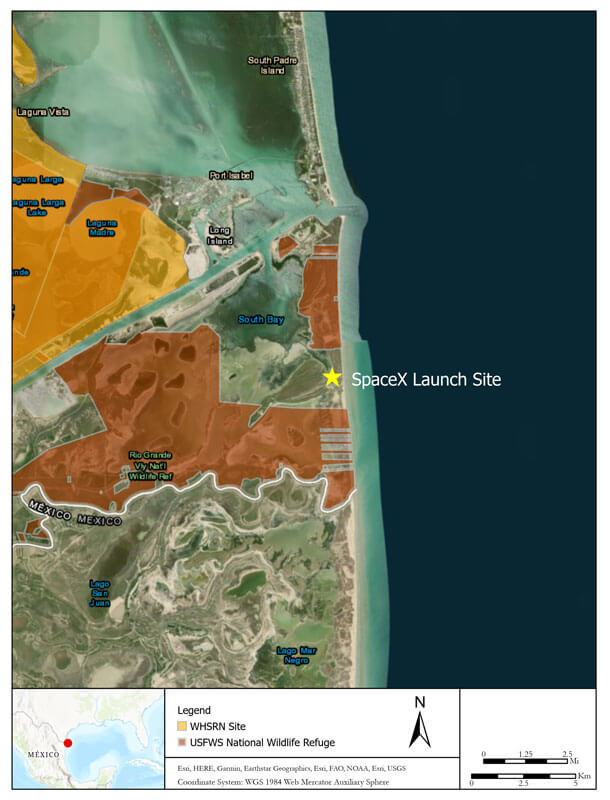
What does this mean for the shorebirds that call Boca Chica home?
Each test, which can include an explosion, generates extreme noise that could potentially deafen birds or cause brain damage, a ‘vapor’ cloud that contains unknown combusted chemicals, and often falling debris. There is also potential general disturbance impacts from the drastically increased traffic and construction. Monitoring since the original EIS has been limited and there appears to have been poor compliance to the conditions of the EIS. “We don’t fully understand the impacts or how far they extend,” said David Newstead from Coastal Bird Program for the Coastal Bend Bays & Estuaries Program. “What we need is a monitoring plan through the entire year, surveys after each event to assess impacts to habitat and wildlife, and appropriate mitigation measures in the case of impact or loss.”
Laguna Madre is not the only WHSRN site in close proximity to a space facility. The Maryland-Virginia Barrier Islands WHSRN site includes NASA’s Wallops Flight Facility. In the United States Fish and Wildlife Service (USFWS)’s 2015 Biological Opinion it was determined that “Plovers, knots, and loggerheads are potentially impacted by ongoing rocket launches and related training, testing, and preparation; maintenance of existing buildings and infrastructure; shoreline restoration and construction of shoreline stabilization structures; and operation of UASs and aircraft overhead.”
Due to these impacts, NASA conducts extensive monitoring of protected species including nesting Piping Plovers, Red Knots, and several species of sea turtle to understand wildlife at the facility and the impact of the activities at the site. This also includes post-mission surveys to determine any loss of wildlife or habitat impacts from launches. NASA also participates in conservation efforts in the area including predator exclosures and efforts to reduce disturbance from recreational users. Lessons from NASA’s compliance with monitoring requirements and collaboration with conservation partners could serve as an example to SpaceX’s EIS process at Boca Chica.
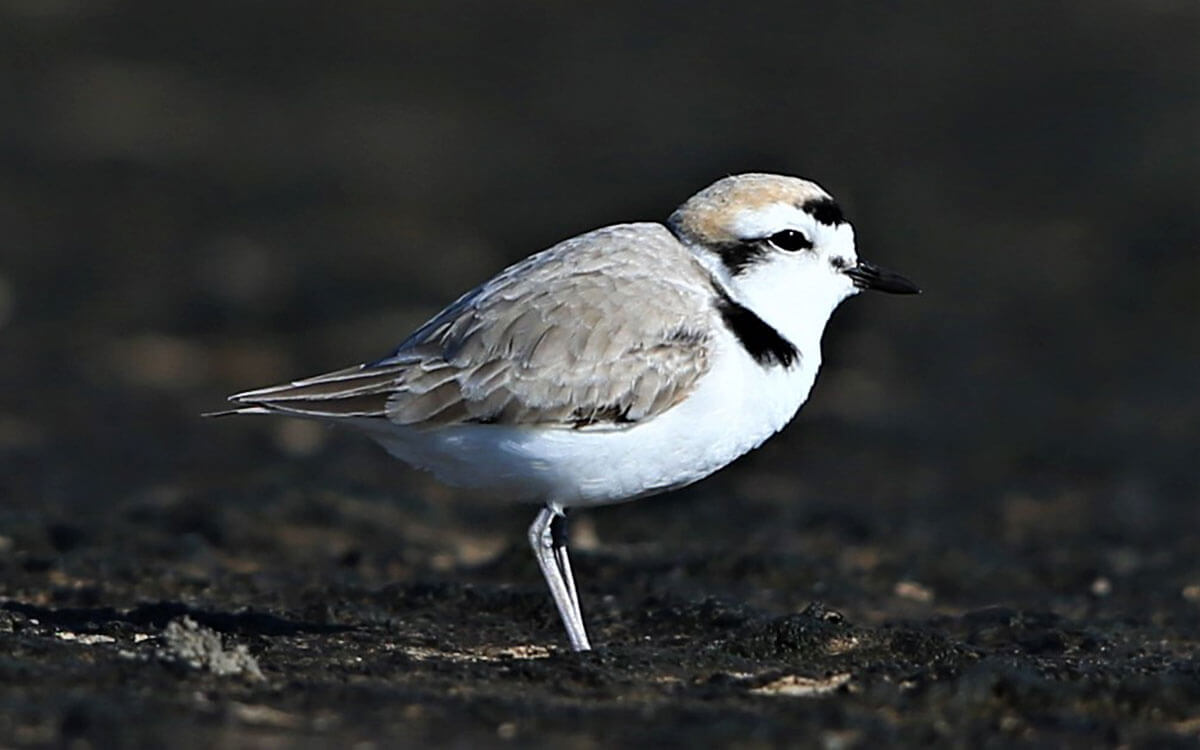
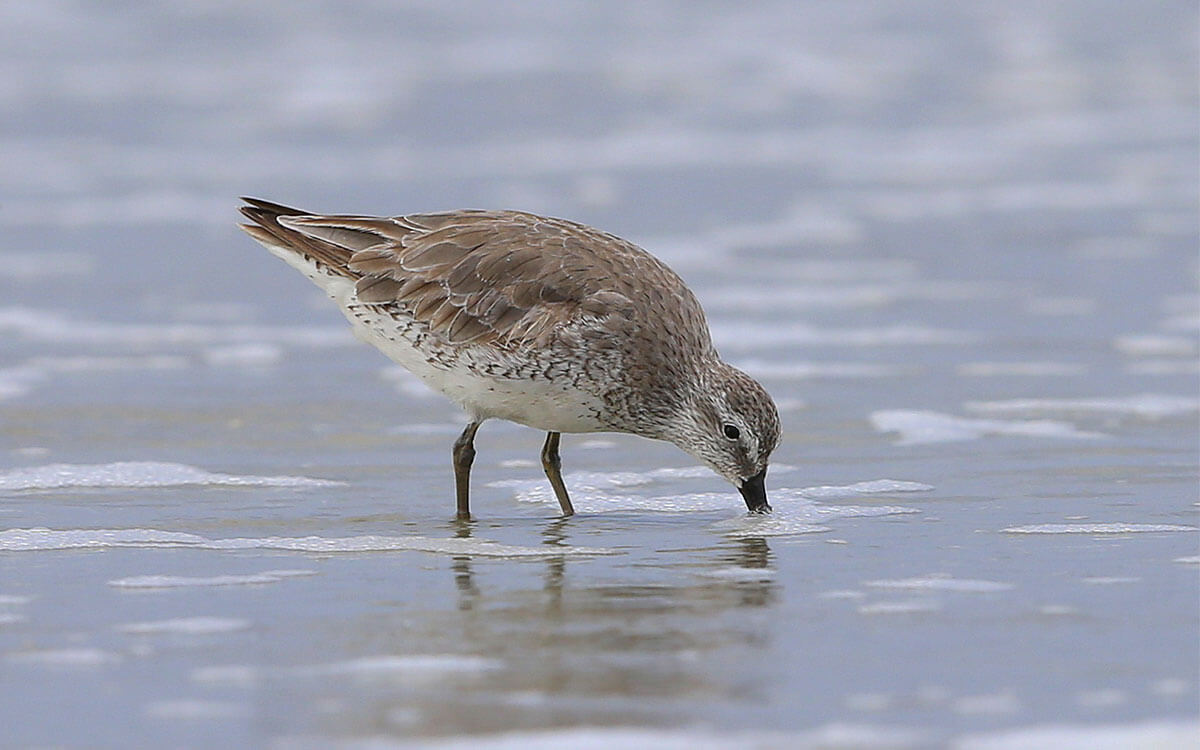
Left: A Snowy Plover. Right: a non-breeding Red Knot. Photos: Brad Winn.
If the SpaceX facility is to remain in this location, a new EIS would allow for a public process to review the changes in the operations since 2014 and consider alternative locations. This EIS could consider appropriate monitoring, mitigation, restoration, and compliance for the site.
As habitat loss continues to be a significant threat for shorebirds, protecting the remaining areas of habitat is critical. The American Bird Conservancy, working in the region on habitat conservation, is seeking technological advancement that also supports conservation. “American Bird Conservancy is 100% behind the exploration of space but not at the expense of nature and wildlife here on Earth. Surely we can have both. We look forward to hearing SpaceX’s plans to safeguard wildlife from disturbance due to their launch operations.” Mike Parr, President, American Bird Conservancy.
Cover Photo: Laguna Atascosa National Wildlife Refuge. Photo: USFWS





